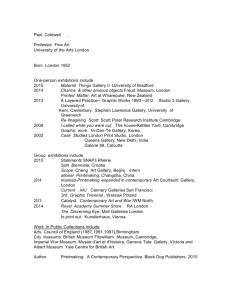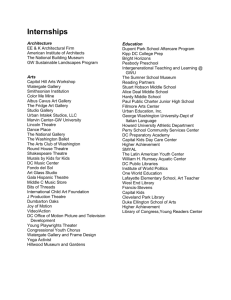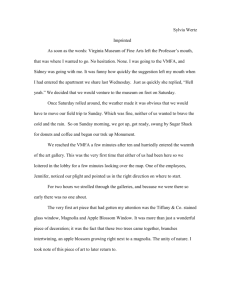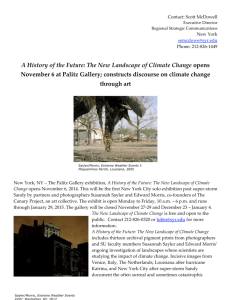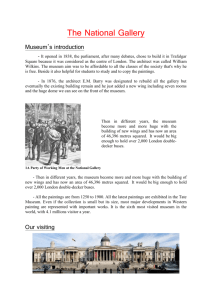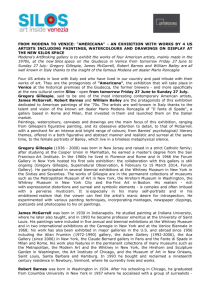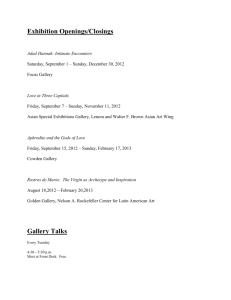Word document - Core Knowledge UK
advertisement
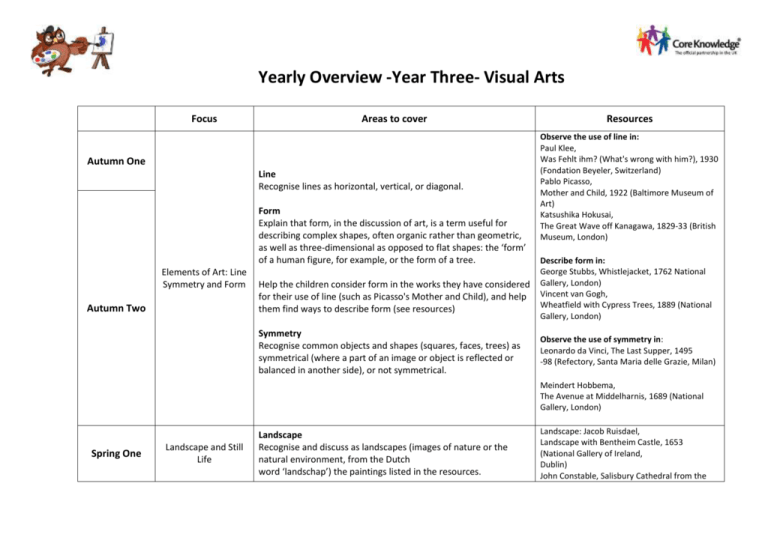
Yearly Overview -Year Three- Visual Arts Focus Areas to cover Autumn One Line Recognise lines as horizontal, vertical, or diagonal. Form Explain that form, in the discussion of art, is a term useful for describing complex shapes, often organic rather than geometric, as well as three-dimensional as opposed to flat shapes: the ʻformʼ of a human figure, for example, or the form of a tree. Elements of Art: Line Symmetry and Form Autumn Two Help the children consider form in the works they have considered for their use of line (such as Picasso's Mother and Child), and help them find ways to describe form (see resources) Symmetry Recognise common objects and shapes (squares, faces, trees) as symmetrical (where a part of an image or object is reflected or balanced in another side), or not symmetrical. Resources Observe the use of line in: Paul Klee, Was Fehlt ihm? (What's wrong with him?), 1930 (Fondation Beyeler, Switzerland) Pablo Picasso, Mother and Child, 1922 (Baltimore Museum of Art) Katsushika Hokusai, The Great Wave off Kanagawa, 1829-33 (British Museum, London) Describe form in: George Stubbs, Whistlejacket, 1762 National Gallery, London) Vincent van Gogh, Wheatfield with Cypress Trees, 1889 (National Gallery, London) Observe the use of symmetry in: Leonardo da Vinci, The Last Supper, 1495 -98 (Refectory, Santa Maria delle Grazie, Milan) Meindert Hobbema, The Avenue at Middelharnis, 1689 (National Gallery, London) Spring One Landscape and Still Life Landscape Recognise and discuss as landscapes (images of nature or the natural environment, from the Dutch word ʻlandschapʼ) the paintings listed in the resources. Landscape: Jacob Ruisdael, Landscape with Bentheim Castle, 1653 (National Gallery of Ireland, Dublin) John Constable, Salisbury Cathedral from the Meadows, 1831 (National Gallery, London) Henri Rousseau, Surprised! A Tiger in a Tropical Storm, 1891 (National Gallery, London) [Also seen in Year 1] Still Life Recognise and discuss examples of still life (images of one or more inanimate objects) [Cross-curricular links with Year 3 Language and Literature: Mythology of Ancient Greece] Antonio del Pollaiuolo, Apollo and Daphne, c.1432-1498 (National Art Gallery, London) Understand that a mythological work of art depicts characters or a narrative from mythology. In western European painting these are generally from classical mythology. Frederic (Lord) Leighton, The Return of Persephone to Demeter, 1891 (Leeds City Art Gallery, Leeds) Recognise as images from classical mythology and identify the characters/setting/narrative according to the children’s knowledge of the depicted myths from their language and literature studies. Pablo Picasso, Minotaur and his Wife, 1937 (British Museum, London) Architecture [Cross-curricular links with World History] Architecture: The Parthenon (including the Parthenon Frieze or so-called Elgin Marblesʼ, now at the British Museum, London) 440 BC (Acroplis, Athens, Greece) Mythological Paintings Spring Two Summer One Mythological Paintings Types of Art: Architecture Still Life Anon. (from Herculaneum, Italy), Still Life with Peaches and a Glass, AD 50 (Archaeological Museum, Naples) Paul Cézanne, studies with fruit such as apples and/or oranges, for instance, Still Life with Apples, 1877-78 (Fitzwilliam Museum, Cambridge) Understand architecture as the art of designing buildings. Understand symmetry and a line of symmetry as it applies to buildings; observe symmetry in the design of some buildings which are familiar to you and/or the children (you could look at your school, local houses, or focus on the Cathedrals studied previously). Great Stupa, begun 3rd Century BC (Buddhist temple in Sanchi, Raien district, Madhya Pradesh, India). Noting line, shape, and special features (such as columns and domes), look at and consider the suggested structures (see resources) in relation to World History. 22 (Whitehall, London) [include Rubensʼs painted ceiling, with its references to James I, the Union of England and Scotland, and the Gunpowder Plot] Inigo Jones, Banqueting House, 1619 Sir Christopher Wren, St Paul's Cathedral, 1675 Modern Architecture Modern Architecture: Consider an example of modern architecture, assessing what is traditional and what is innovative. Frank Gehry, Guggenheim Museum, 1997, Bilbao, Spain Eric Miralles, Scottish Parliament Building, 2004, Edinburgh, UK


